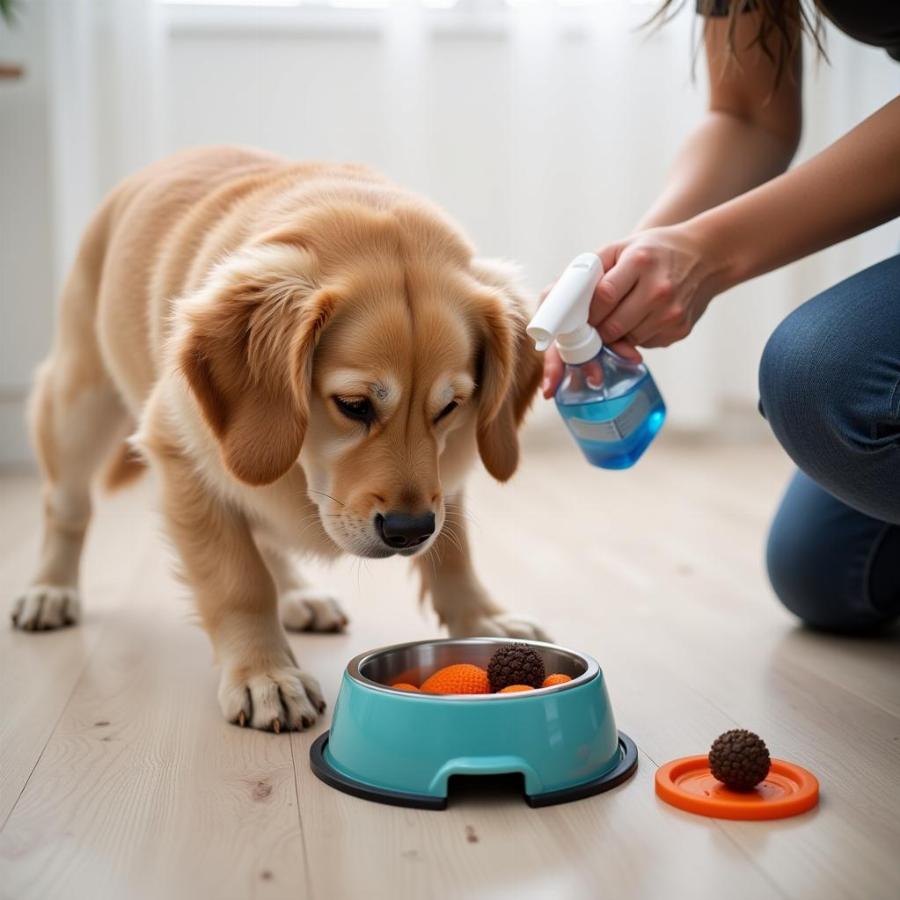Parvovirus is a highly contagious and potentially deadly disease for dogs, especially puppies. If you’re a pet owner with both a dog and a cat, you’re likely concerned about the possibility of cross-species transmission. So, can a dog catch parvo from a cat? The short answer is no, but the situation is a little more nuanced than that. Let’s explore the specifics of canine parvovirus, feline panleukopenia (the cat equivalent), and how to protect your furry friends.
Understanding Canine Parvovirus and Feline Panleukopenia
Canine parvovirus and feline panleukopenia are both caused by viruses in the Parvoviridae family. While they share some similarities, they are distinct viruses that target different species. Canine parvovirus specifically affects dogs, while feline panleukopenia affects cats, and sometimes other members of the weasel family like ferrets and raccoons. It’s crucial to understand that dogs cannot contract panleukopenia from cats, and cats cannot contract parvo from dogs.
How Parvo and Panleukopenia Spread
Both viruses spread through direct or indirect contact with infected feces, vomit, or other bodily fluids. This means your dog can be exposed to parvo even without encountering an infected dog directly. Contaminated surfaces, objects, and even shoes can carry the virus. Similarly, cats can spread panleukopenia through contaminated environments.
The Risk of Indirect Transmission
Although dogs can’t catch parvo directly from a cat, there’s a small risk of indirect transmission. If a cat comes into contact with parvo-contaminated feces (for example, if they walk through an area where an infected dog has defecated) and then interacts with your dog, they could theoretically carry the virus on their fur or paws. This is why maintaining good hygiene practices for all your pets is essential.
Protecting Your Pets
Vaccination is the most effective way to protect your dog from parvovirus and your cat from panleukopenia. Make sure your pets are up-to-date on their vaccinations, especially if they are puppies or kittens, or frequently interact with other animals. Regular cleaning and disinfection of your home and pet areas are also crucial for minimizing the risk of infection.
 Cleaning Pet Bowls and Toys
Cleaning Pet Bowls and Toys
What to Do if You Suspect Parvo
If your dog exhibits symptoms of parvo, such as lethargy, vomiting, diarrhea (often bloody), and loss of appetite, seek veterinary attention immediately. Parvo is a serious illness that requires prompt treatment. Early intervention significantly increases the chances of survival.
Can Dogs Catch Cold Sores?
While we’re on the topic of cross-species transmission, it’s worth mentioning that dogs cannot catch cold sores (caused by the herpes simplex virus) from humans or cats. Cold sores are species-specific. However, dogs can suffer from other viral infections that affect their skin and mucous membranes.
Keeping Your Pets Safe
By understanding the specifics of parvo and panleukopenia, you can take proactive steps to protect your furry family members. Vaccination, hygiene, and prompt veterinary care are crucial for ensuring their health and well-being. Remember, while direct transmission of parvo from cat to dog is not possible, indirect transmission can occur, highlighting the importance of overall cleanliness and preventative measures.
Frequently Asked Questions
- Can cats carry the parvovirus on their fur? Yes, it’s possible, though unlikely. If a cat walks through parvo-contaminated feces, they could carry the virus on their fur and potentially transfer it to a dog.
- How long does parvo live in the environment? Parvo can survive in the environment for months, even years, in the right conditions.
- What are the first signs of parvo in a dog? Early signs of parvo often include lethargy, loss of appetite, vomiting, and bloody diarrhea.
- Is there a cure for parvo? There is no specific cure for parvo, but supportive care, including fluids, medications to control vomiting and diarrhea, and antibiotics to prevent secondary infections, can significantly improve a dog’s chances of survival.
- How can I disinfect my home to kill parvo? A solution of bleach and water (1 part bleach to 32 parts water) is effective against parvo.
Further Reading and Related Questions
- Are you concerned about the cost of vaccinations? Check out our article on free vaccination for dog events 2024.
- Learn more about essential vaccinations for your dog with our guide on the 5 in one dog vaccine.
- Worried about other zoonotic diseases? Find out can dogs catch cold sores.
About Beaut Dogs
Beaut Dogs is your trusted source for all things canine, offering expert advice, valuable insights, and a deep dive into the fascinating world of dogs. We provide comprehensive information on various breeds, from the common to the rare and exotic, covering their unique characteristics, temperaments, and specific care requirements. From health and nutrition to training and grooming, we’re here to help you provide the best possible care for your beloved companion. When you need assistance, please contact us via Email: [email protected], and Beaut Dogs will provide you with detailed and accurate answers. Visit https://beautdogs.com today and embark on a journey of discovery into the wonderful world of dogs!